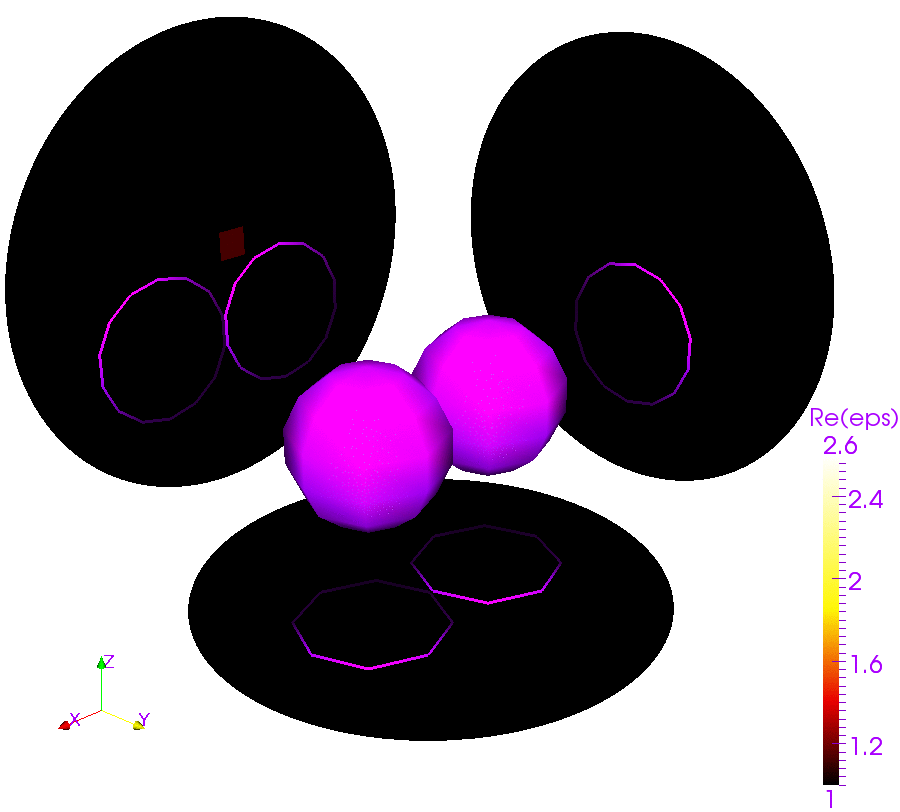top of page


My professional journey started in 2010 as a junior research scientist in the Sobolev Institute of Mathematics.
In a close collaboration with Ilya Peshkov, Evgenii Romenskii and Sergei Godunov, I worked on modeling of physical phenomena in domains of fluid and gas dynamics, and, later, continuum mechanics.
I. Voznyuk, et al, "Modeling cavitation in the earth's mantle while dynamic unloading, Materials of XLIX international scientific student conference, (in russian) p. 123, 2011"

Number of engineering simulations of large and complex structures is rapidly growing, requiring the development of fast algorithms which can fully utilize parallel computing resources.
To that end, I joined the Fresnel Institute in order to work on modern numerical methods aimed at pushing the computational limits in domain of computational electromagnetics. In a close cooperation with my colleagues, I proposed a new numerical approach, named FETI-FDP2 which is based on the domain decomposition idea.
I. Voznyuk, H. Tortel, and A. Litman. "Scattered field computation with an extended FETI-DPEM2 method." Progress In Electromagnetics Research 139 (2013): 247-263.
Domain Decomposition Method

The purpose of every mathematically approved algorithm is to be wrapped into a computational code in order to automatize modeling of physical phenomena. To do so, I generally took advantages of Fortran/Python (rarely, of C++) and tested some parts of code on Matlab.
All the numerical codes in my background were principally related to solving the large-scale two- and three- dimensional electromagnetic problems, describing a complex propagation inside the anisotropic, inhomogeneous media.
I. Voznyuk, H. Tortel, and A. Litman. "3-D Electromagnetic Scattering Computation in Free-Space With the FETI-FDP2 Method." IEEE Transactions on Antennas and Propagation 63.6 (2015): 2604-2613.
Large-scale ElectroMagnetic Problems
Inverse problems & Tomography

Another big part of my work in the Fresnel Institute was dedicated to the quantitative inversion problems. Main challenge was to render a homemade inversion algorithm more flexible in terms of required memory. To do so, we applied the proposed FETI-FDP2 approach into the inverse method investigated in our laboratory.
With the help of developed computational package, we managed to demonstrate the efficiency of the proposed inversion approach for reconstruction of 3D targets from the real measurements.
I. Voznyuk, A. Litman, and H. Tortel. "Efficient combination of a 3D Quasi-Newton inversion algorithm and a vector dual-primal finite element tearing and interconnecting method." Inverse Problems 31.8 (2015): 085005.

After successful PhD defence I joined the Atomic Energy Commission LETI Institute (CEA- LETI) in Grenoble as a research engineer in domain of computational photonics.
My research work was focused on designing the complex micro- and nano- photonic devices for various applications ranging from healthcare to integrated optics and wireless structures.
Gliere, A., Boutami, S., Tchelnokov, A., Voznyuk, I., & Allier, C. (2016). U.S. Patent Application No. 15/274,108.
I. Voznyuk, et al, Enlarging the bandwidth of a two-dimensional photonic crystal mirror in the visible range, accepted to Optica Applicata, Vol. XLVII, No. 2, 2017
Photonics and metamaterials

Since the beginning, I realised that almost all engineering components are designed by hand-tuning a small number of parameters, and the domain of computational electromagnetics is not an exception. However, efficient realization of complex and robust devices will require to use a large number of parameters.
To this end, part of my work was always dedicated, one way or another, to extend the current art by developing and implementing a general optimization methods (inversion techniques, topological design approaches, gradient-based and level-set methods).
Voznyuk, I., et al. "Metamodeling as an effective tool for the description of 2D superlattice photonic crystals." Electromagnetics in Advanced Applications (ICEAA), 2016 International Conference on. IEEE, 2016.
Optimization
my contribution
Fluid dynamics
bottom of page